What is drip irrigation system?
A drip irrigation system is a method of watering plants by delivering small, precise amounts of water directly to the root zone of each plant through a network of tubing, valves, emitters, and drip lines. This targeted approach minimizes water waste by reducing evaporation and runoff, while also promoting healthier plant growth by providing consistent moisture to the roots.
Drip irrigation systems are highly efficient, customizable, and suitable for various types of plants, making them a popular choice for both residential and commercial gardening and farming applications.
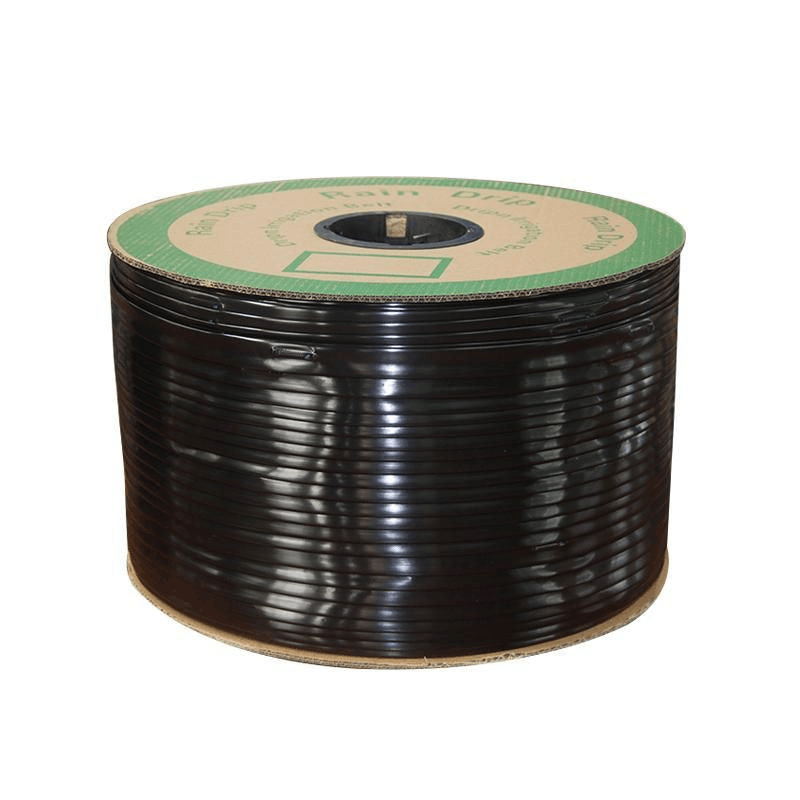
Drip irrigation tape offers several advantages over traditional irrigation methods:
1. Water Conservation: Drip irrigation hose delivers water directly to the plant roots, reducing water waste through evaporation and runoff. This can lead to significant water savings, especially in areas with limited water resources.
2. Increased Yield: By providing a consistent and controlled supply of water to the root zone, drip irrigation hose promotes optimal plant growth and development, leading to increased crop yields.
3. Reduced Labor and Energy Costs: Drip irrigation hose requires less labor and energy to operate compared to traditional irrigation methods such as flood irrigation or sprinkler irrigation. This can translate into significant cost savings for farmers.
4. Improved Soil Health: Drip tape minimizes soil erosion and compaction, promoting healthy soil conditions and nutrient availability for plants.
5. Versatility: Drip tape can be used in a wide variety of agricultural applications, including row crops, orchards, vineyards, and greenhouses.
6. Easy Installation and Maintenance: Drip tape is relatively easy to install and maintain, making it a practical and cost-effective irrigation solution for farmers of all scales.
The components of a drip irrigation system
A drip irrigation system comprises drip tape or tubing delivering water directly to plants, emitters regulating water flow, filters preventing clogging, pressure regulators maintaining consistent pressure, backflow preventers ensuring water safety, connectors joining components, mainline tubing distributing water, and end caps and flush valves for system maintenance. Together, these components efficiently deliver water to plants, conserve water, and minimize weed growth and disease risk.
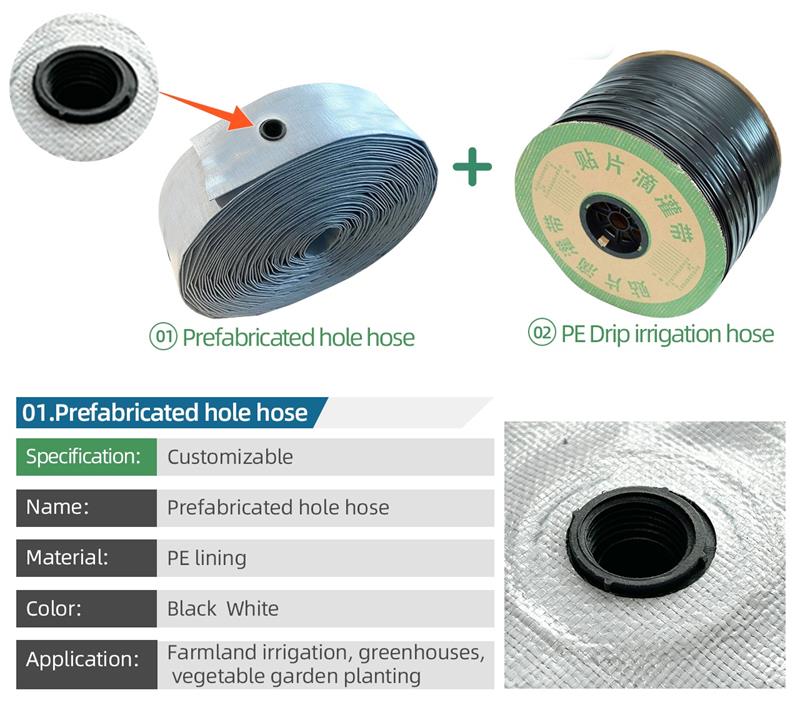
Mainline Master Tape for Water Supply
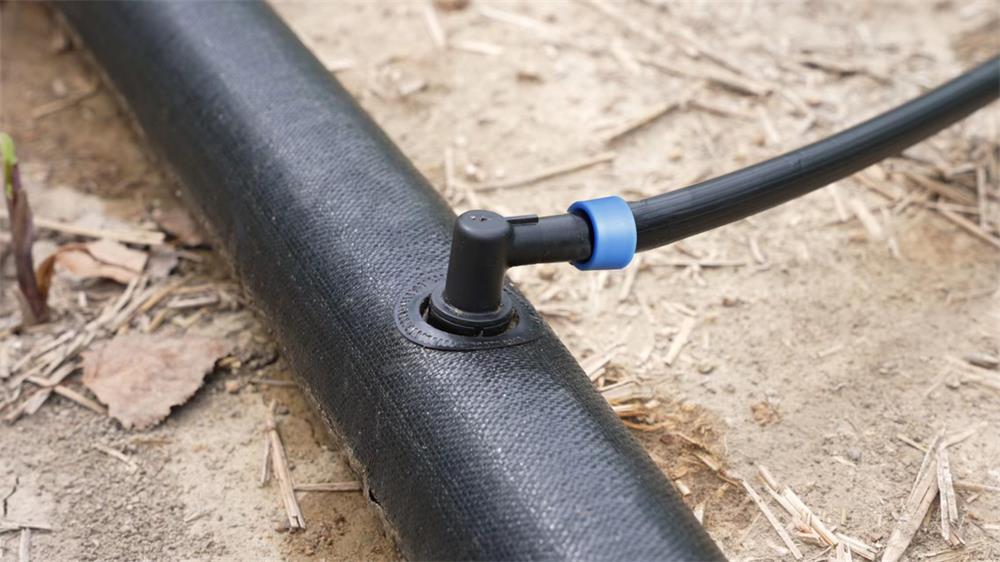
Our mainline master tape has pre-made holes, which greatly reduces the difficulty of installation and saves effort. The perforated mainline drip tape is primarily designed for ease of installation and labor-saving purposes. With pre-drilled holes along the mainline, the installation process becomes significantly simplified, requiring less effort and time. This feature allows for quick and efficient setup, especially in large-scale agricultural or garden applications. By eliminating the need for manual hole punching, our perforated mainline drip tape streamlines the installation process, reducing labor costs and ensuring a hassle-free irrigation system setup.
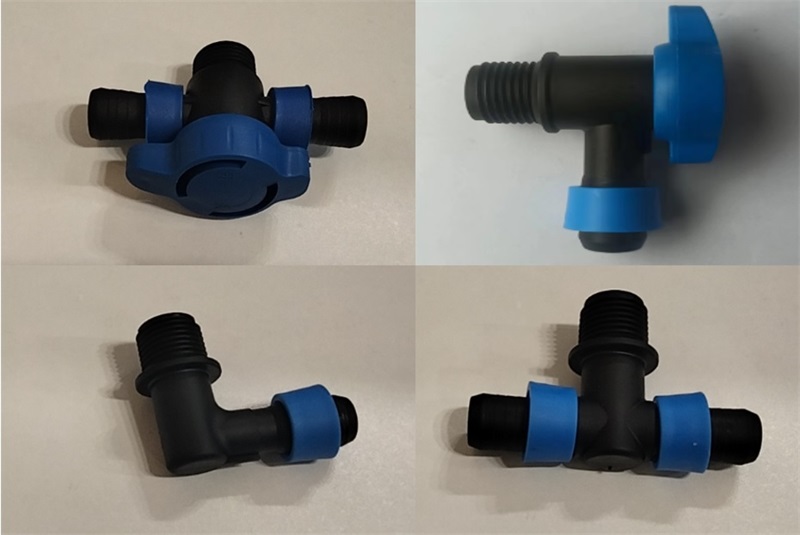
Difference Between Drip Tape and Micro-Sprinkler Tape
With the continuous advancement of technology, there are various irrigation equipment options available for agricultural irrigation. Among them, drip tapes and micro-sprinkler tapes are commonly used tools. Although the names of these two irrigation devices are similar, they are actually different irrigation tools. To deepen users’ understanding of these two devices, let’s take a look at their main differences.
- The fundamental difference between drip tapes and micro-sprinkler tapes lies in “drip irrigation.” The former allows water to seep into the soil drop by drop. Compared to micro-sprinkler tapes, the water output of drip tapes is smaller, making them more suitable for drip irrigation of seedlings.
- Micro-sprinklers utilize agricultural micro-sprinkler tapes assembled into a micro-irrigation system to distribute pressurized water to fields. By irrigating with a small flow rate, the soil near the roots of crops is effectively moistened, allowing water to be conveniently irrigated to the soil near each plant, maintaining lower water stress to meet crop growth needs.
- Drip tapes typically feature embedded drip heads with a flow rate ranging from 2 to 2.5 liters per hour. The drip heads have labyrinth channels on top to adjust water flow. In contrast, micro-sprinkler tapes have water outlets in the form of needle eyes, typically with angled three-hole, five-hole, or seven-hole spray nozzles, offering higher and variable water output.
In summary, the differences between drip tapes and micro-sprinkler tapes mainly lie in the irrigation method, drip heads, and water output. Additionally, they are also used for different types of crops, a consideration for farmers when making purchasing decisions.
How to install a drip irrigation system
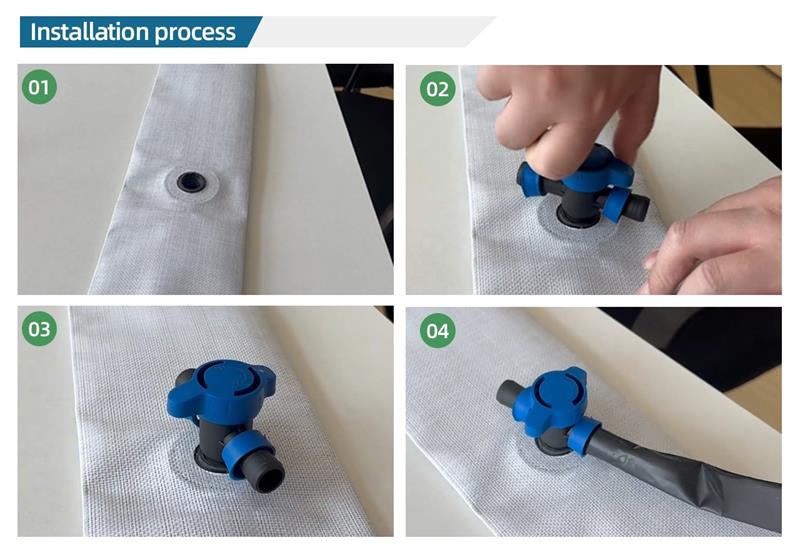
- Plan Layout: Determine the layout of the drip irrigation system based on the location of plants and planting areas. Consider factors such as the water source location, water pressure, and irrigation requirements.
- Prepare Materials: Purchase the necessary materials including drip tubing, fittings, filters, pressure regulators, connectors, etc., and ensure their quality meets requirements.
- Install Water Source: Connect the water source to the drip irrigation system, ensuring an adequate water flow and install necessary filters and pressure regulators to protect the system and ensure stable water flow.
- Lay Mainline: Lay the mainline within the planting area, placing it along or between rows of plants as per the layout plan.
- Install Drip Tubing or Tape: Connect the drip tubing or tape to the mainline and cut and position them as needed to ensure they cover the root zone of each plant.
- Install Fittings and Accessories: Install connectors, fittings, and other necessary accessories in the drip irrigation system, ensuring tight connections between components to prevent leaks or seepage.
- Test System: Before starting the drip irrigation system, conduct a comprehensive test to check for leaks at pipe connections, ensure drip heads are working correctly, and verify uniform water flow.
- Adjust and Maintain: Adjust pressure regulators and drip heads flow rates as necessary to meet the irrigation needs of the plants, and regularly inspect the system to ensure proper operation and perform maintenance as needed.
These steps outline the basic process for installing a drip irrigation system. Follow correct installation and maintenance procedures to ensure efficient system operation and healthy plant growth.
What is patch drip tape and how to use it correctly?
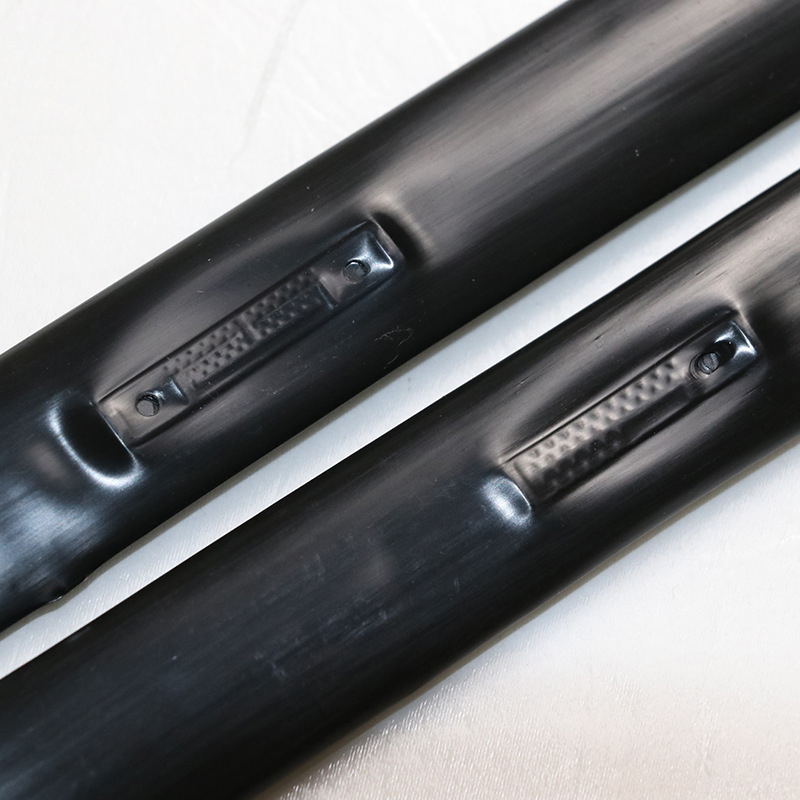
- Drip irrigation pipes and emitters are prone to clogging and require high water quality, hence the necessity of installing filters.
- Drip irrigation cannot regulate field microclimates and is not suitable for irrigation during freezing periods. Additionally, it cannot be used for fertigation in vegetable irrigation systems.
- Drip irrigation entails a higher investment, necessitating consideration of the economic benefits for crops.
- Pay attention to tightly compacting the ground film when laying drip tape, ensuring it closely adheres to the drip tape without leaving gaps. Avoid sunlight focusing through water droplets. Before sowing, level the land to reduce unevenness. Prevent soil clumps, rocks, and weeds from lifting the ground film, which can cause water accumulation under the film, forming a lens effect and scorching the drip tape. Embed the drip tape during installation to prevent focal burns.
Proper usage guidelines for patch type drip tape are as follows:
- Pay attention to water pressure when using patch type drip tape. Maintain moderate pressure to avoid rupturing the soft tape.
- Ensure the fertilizer nutrient ratio is appropriate.
- Prevent blockages in the patch type drip tape. Clean the filters regularly and ensure fertilizers are properly dissolved when applied, while removing impurities.
- Properly store plastic pipe materials. When not in use during the summer, collect the pipes and tapes placed on the ground and store them in a shaded and cool place. Before reuse, check for any breakage, leaks, or blockages, and repair before redeployment.
Things to note when buying drip irrigation tapes
Choosing the right drip tape is crucial for ensuring efficient irrigation in agricultural or garden settings. Here are some factors to consider when purchasing drip tape:
- Flow Rate: Determine the flow rate required for your specific irrigation needs. Consider factors such as soil type, crop water requirements, and desired irrigation frequency. Select drip tape with a flow rate that matches your irrigation requirements to ensure adequate water delivery to plants.
- Emitter Spacing: Consider the spacing between emitters on the drip tape. Opt for drip tape with appropriate emitter spacing based on the spacing of your plants or crops. Closer emitter spacing may be suitable for closely spaced crops, while wider spacing may be preferable for larger plants or rows.
- Durability: Choose drip tape made from durable materials that can withstand exposure to sunlight, weather, and irrigation chemicals. Look for drip tape with UV stabilization to prevent degradation from prolonged sun exposure and ensure long-lasting performance in outdoor environments.
- Compatibility: Ensure that the drip tape is compatible with your irrigation system components, including connectors, fittings, filters, and pressure regulators. Select drip tape with standard-sized fittings to facilitate easy installation and compatibility with existing irrigation equipment.
- Cost-effectiveness: Evaluate the cost-effectiveness of different drip tape options based on factors such as initial cost, durability, and water-saving potential. Consider investing in higher-quality drip tape that may offer better performance and longevity, ultimately saving water and reducing long-term maintenance costs.
- Manufacturer Reputation: Choose drip tape from reputable manufacturers known for producing high-quality irrigation products. Research customer reviews, product specifications, and warranty information to assess the reliability and performance of the drip tape before making a purchase.
By considering these factors, you can select drip tape that meets your specific irrigation requirements and ensures efficient water delivery for healthy plant growth.

What is the price of drip irrigation tape?
The overall price range for drip tape is between $0.2 to $0.6 per meter. Within this range, there are various specifications, and the pricing follows certain patterns: thicker wall thickness leads to higher prices, higher flow rates result in higher prices, and smaller emitter spacing corresponds to higher prices.
Additionally, it’s important to consider factors such as durability, compatibility with irrigation systems, and the reputation of the manufacturer when selecting drip tape. Investing in higher-quality drip tape may result in better performance and longevity, ultimately saving costs in the long run. Therefore, it’s advisable to carefully evaluate the features and specifications of drip tape before making a purchase decision.
As a professional drip irrigation hose manufacturer, our service is not only reliable, but our technology and products are more trustworthy. Welcome to cooperate, we will wholesale the drip irrigation supplies you need at low prices.